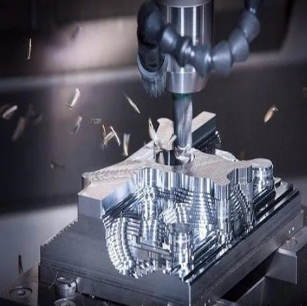
Large-scale 3D printing is transforming the construction industry by providing a faster, more cost-effective, and environmentally friendly way to build structures. This technology enables the creation of complex, customized designs that were previously difficult to achieve. By printing materials like concrete and composite plastics layer by layer, 3D printers are changing the way we approach both residential and commercial construction.
How Large-Scale 3D Printing Works
The process begins with designing a digital model of the desired structure using CAD software. Once the design is complete, the 3D printer reads the model and starts laying down material in layers. This method of additive manufacturing ensures that only the necessary material is used, minimizing waste and improving cost-efficiency. It’s a highly accurate, automated system that produces consistent results and can work around the clock.
Why Large-Scale 3D Printing is Beneficial
1. Faster Build Times
Traditional construction can be slow, with many stages and delays. Large-scale 3D printing speeds up the process significantly, allowing entire structures to be printed in a matter of days, not months. This helps meet tight deadlines and rapidly deploy infrastructure.
2. Reduced Costs
Thanks to its ability to minimize material waste and reduce labor needs, 3D printing offers a far more affordable construction method. Fewer workers are needed on-site, and the cost of materials is lower because the printer uses exactly what’s necessary, reducing wastage.
3. Sustainability
In a world increasingly concerned with environmental issues, 3D printing offers a sustainable solution. By recycling materials and using less energy compared to traditional methods, 3D printing in construction helps reduce the overall environmental footprint.
4. Customization and Design Flexibility
One of the standout features of 3D printing is its design flexibility. Complex shapes, intricate structures, and personalized designs can be printed with ease, providing architects and builders with more creative freedom. Custom homes, commercial buildings, and even sculptures are now more accessible.
5. Precision and Quality
3D printers create structures with high precision, reducing the likelihood of errors. This means fewer corrections and a higher quality of the finished product.
Applications in Different Areas
Affordable Housing
Large-scale 3D printing has the potential to solve housing crises worldwide by reducing the costs of construction. With the ability to quickly build affordable homes, 3D printing provides an innovative solution to the problem of insufficient housing.
Disaster Relief and Emergency Shelters
When disaster strikes, 3D printing offers a fast, reliable method to create temporary shelters for those in need. Custom-designed homes and facilities can be built in a fraction of the time compared to traditional methods, providing a crucial advantage in emergencies.
Commercial and Industrial Use
Beyond homes, 3D printing can be used for commercial buildings, including offices, factories, and healthcare facilities. Its ability to quickly create tailored structures and components makes it ideal for a wide range of industries.
Public Infrastructure and Artistic Projects
3D printing can be used to design public art, large sculptures, and public infrastructure such as bridges, parks, and plazas. The creative possibilities with this technology are endless.
Challenges and Limitations
Despite its many benefits, large-scale 3D printing still faces challenges. The range of materials that can be used for printing is currently limited, and further research is needed to explore new options. Regulatory issues are another hurdle, as construction codes and standards for 3D-printed buildings are still being developed. Additionally, while the technology is improving, scaling up to larger structures remains a challenge.
The Future of 3D Printing in Construction
The future of large-scale 3D printing in construction looks promising, with ongoing advancements in materials and machine capabilities. As the technology matures, it is expected to play a significant role in reshaping the construction landscape. Faster, more affordable, and sustainable buildings will become the norm, allowing for more creative designs and custom structures. The ability to reduce costs and waste while improving building speed positions 3D printing as a major player in the future of construction.





Leave a Reply